The Art of Noise Exhibit
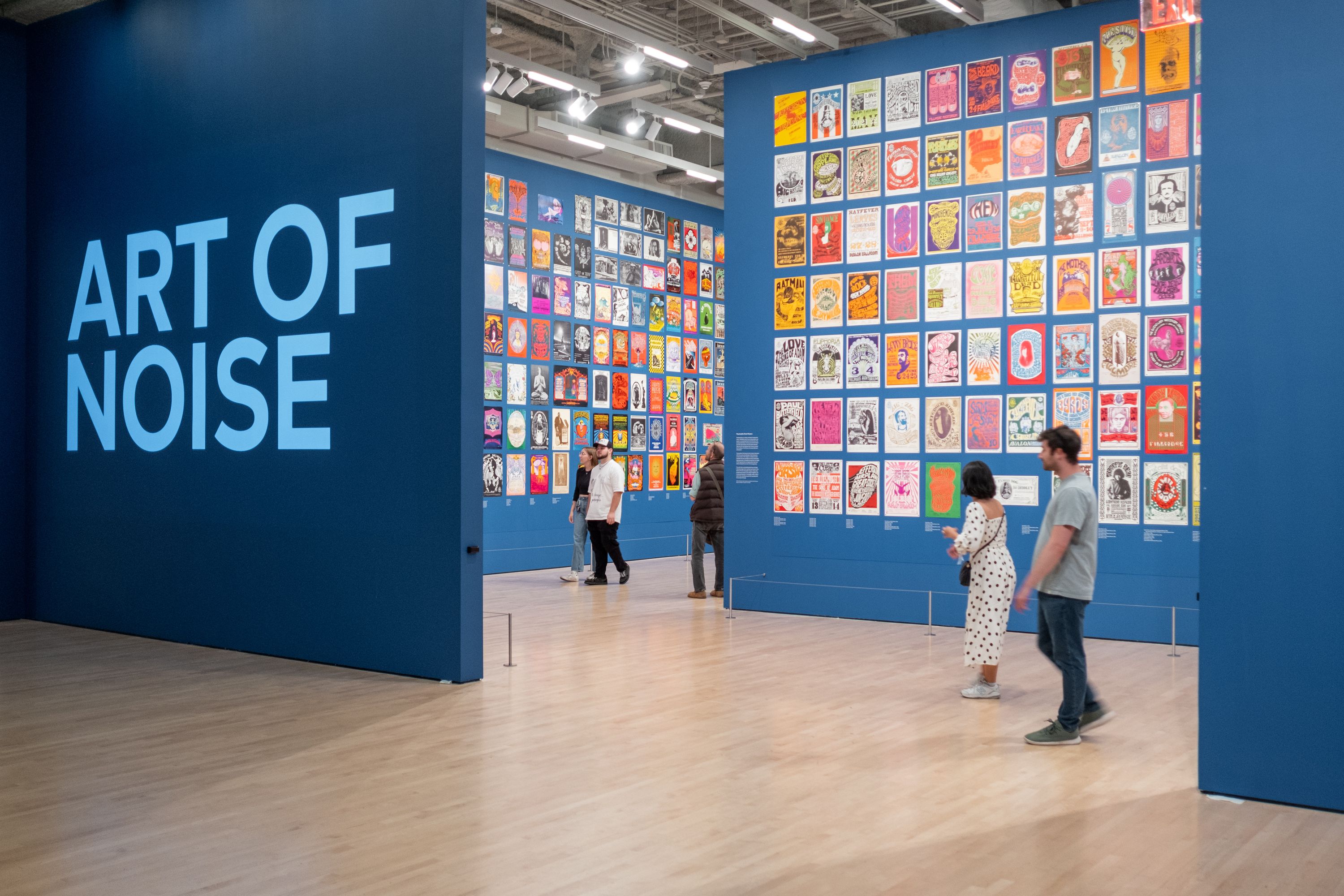
I recently visited the San Francisco Museum of Modern Art to see the Art of Noise exhibit and was stunned. I felt nostalgic browsing the audio products I recall seeing and enjoying years ago, and inspired by the gorgeous pieces I was unfamiliar with. Yes, pieces. Many products are worthy of being in a museum (or my living room).
After leaving I couldn’t stop thinking about the exhibit and ended up returning a day later to do another lap. Below are a few of my favorite pieces and experiences.
Listening room
Before approaching the main part of the exhibit area you can sit down and recline in Devon Turnbull’s HiFi Pursuit Listening Room dream No. 2 and take in its “exceptionally high-fidelity music” played on a “custom-built sound system.” The speakers are gigantic and brutalist, and the sound is soul-piercing.
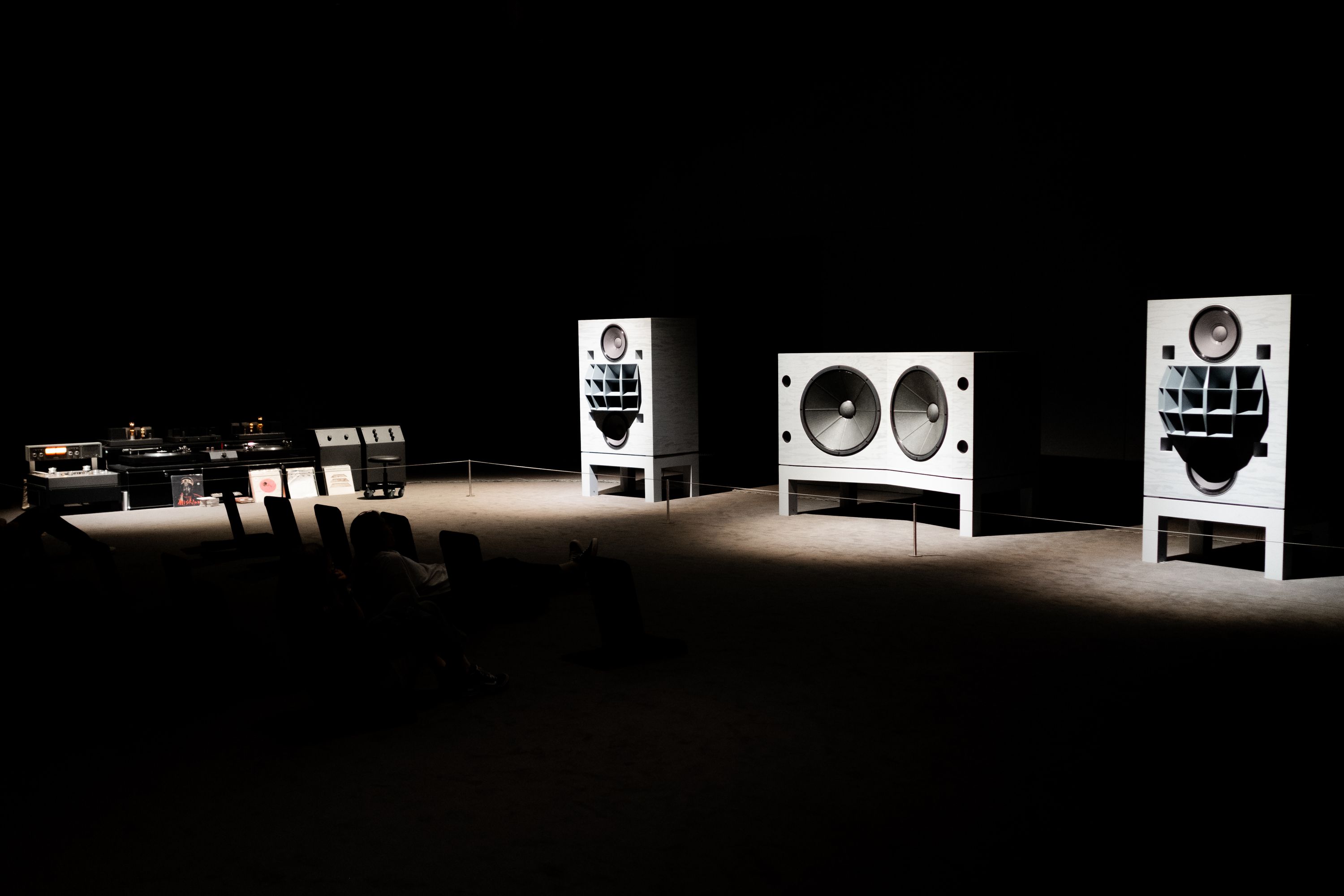
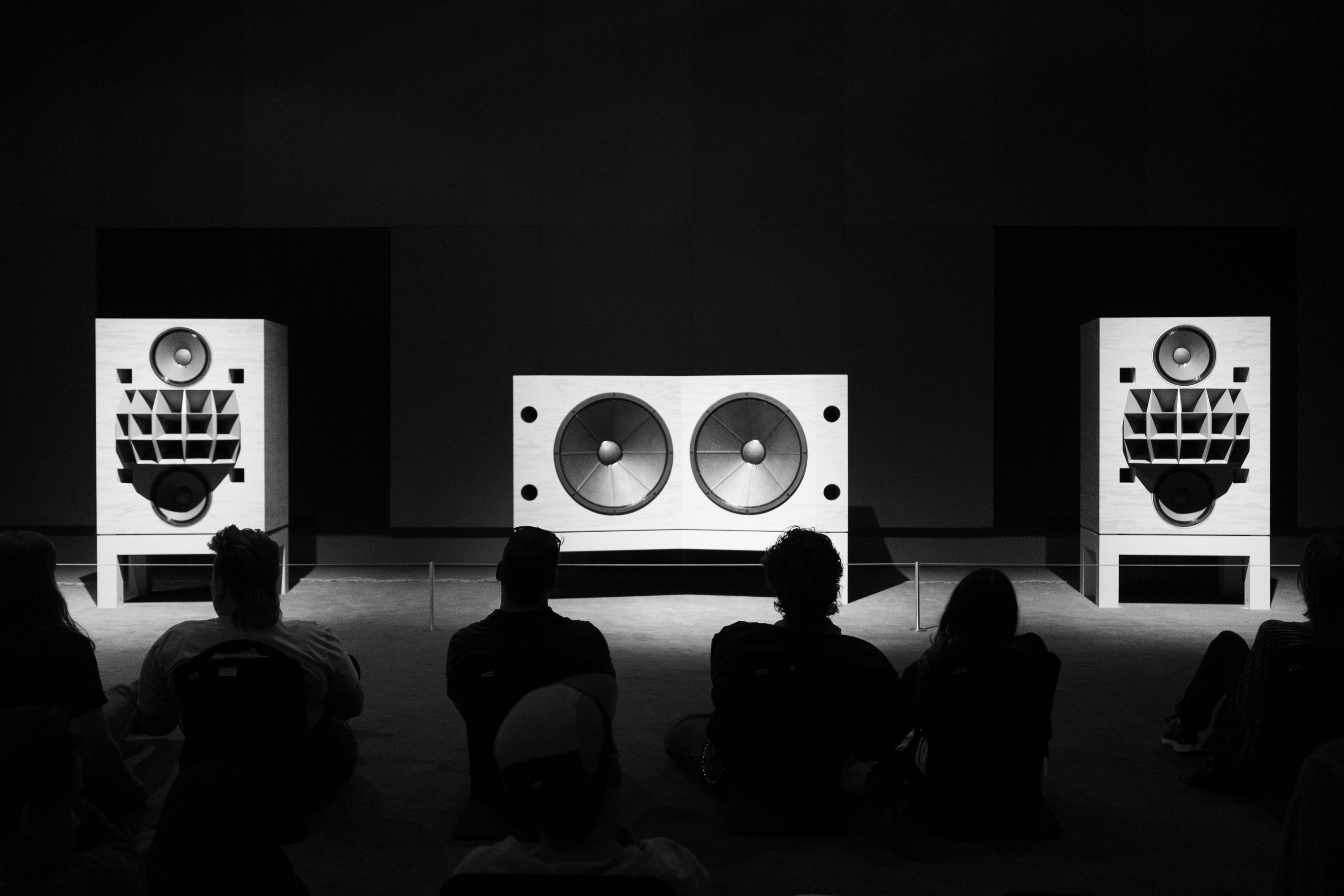
Posters
In the first room there are approximately 400 posters for albums, concerts, and advertisements. Note the comfortable looking seating and intense blues used throughout the space.
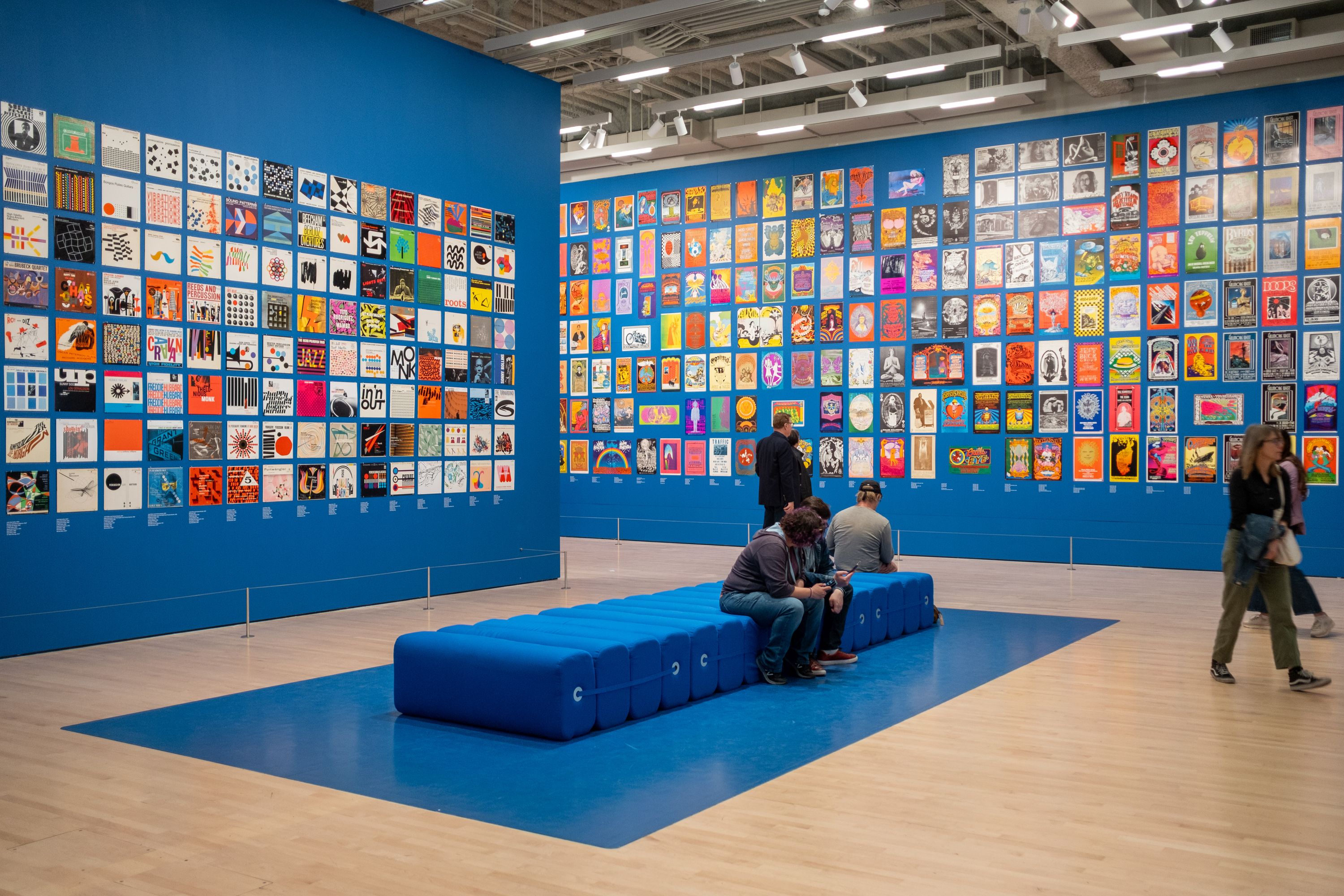
I instantly recognized a few Swiss-designed posters from my collection of graphic design books that I pour over when in need of inspiration. Two of my favorites are Gottlieb Soland’s Grammo-grafik from 1957, and Josef Müller-Brockmann’s Otto Klemperer reza anda: Ludwig Van Beehthoven from 1955.

I’m a strong proponent for making posters. My new mantra at work is “does this project need a poster?”
Sound installation
After passing through the poster room, one approaches the Teengage Engineering-designed sound installation. Large, blue, plush seats beckon visitors to sit and experiment with the equipment. The lack of clear seating boundaries encourages people to improvise through kneeling, lying down, or sitting to face in any direction. It feels more like a playground than a museum.
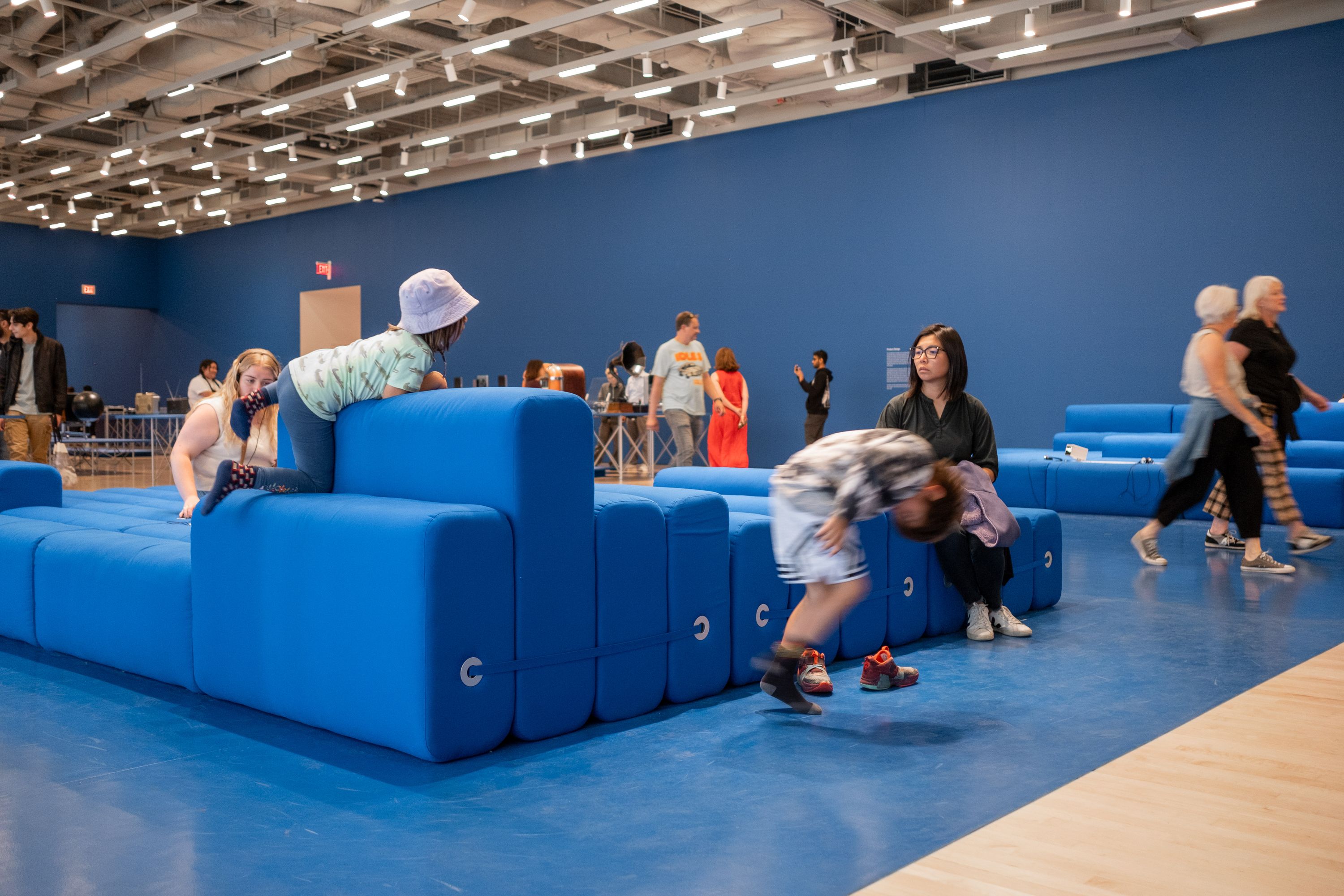
Several listening stations are arranged amongst the seats where one can don a pair of headphones, press buttons to manipulate music, and stare at a miniature television.

After enjoying the tactile feel and click sounds of the station’s buttons I noticed that Teenage Engineering printed its name on the headphones. What a lovely touch.
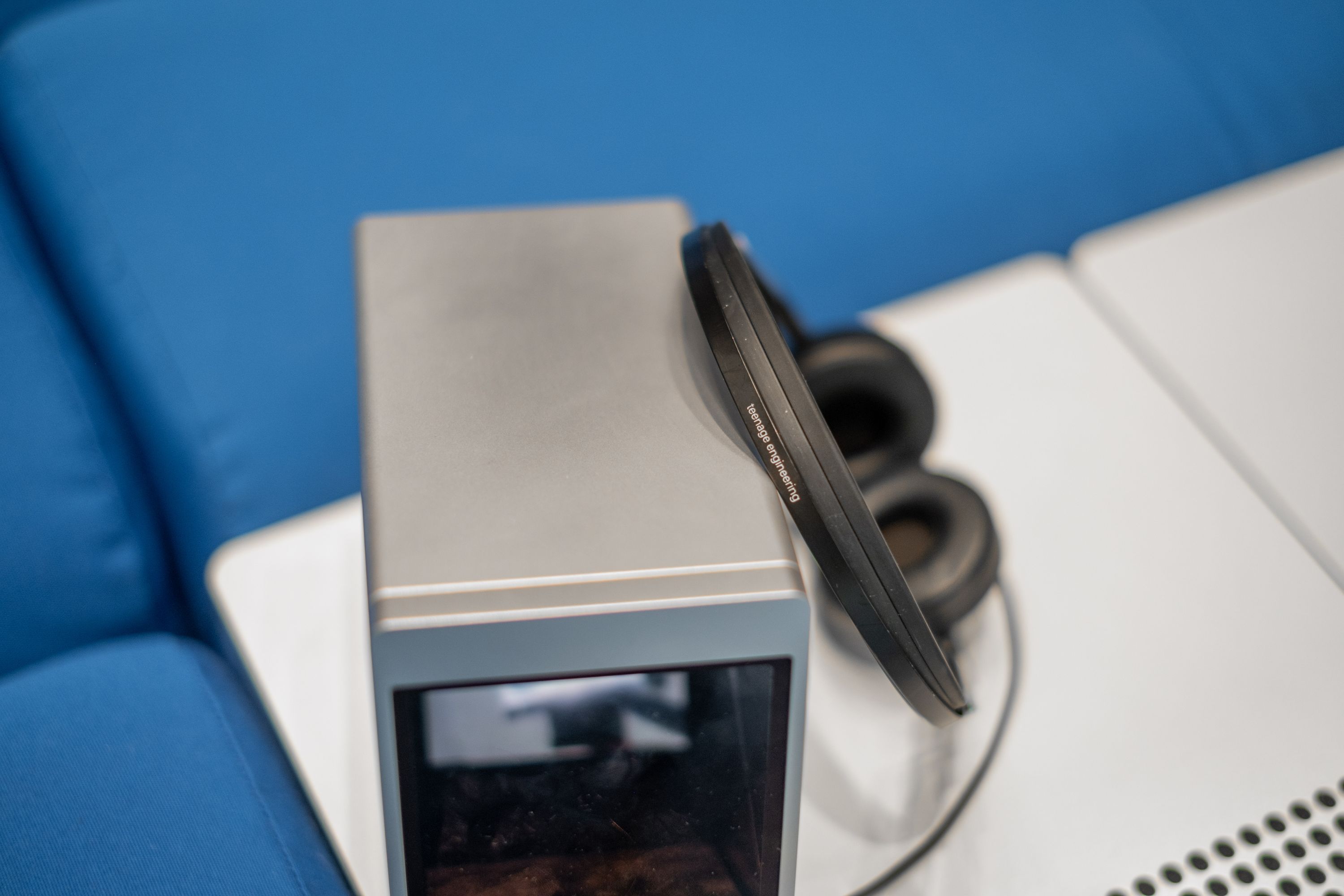
Products
Immediately following the sound installation is a table littered with beautiful, aging music playing devices. Centrally placed is an iPod from 2001 along with a few iPod Shuffles and a single iPod Nano. This struck me as an odd decision considering their recency. They stole the focus from a variety of Braun products, the original Sony Walkman, the original Sony Discman, and a rare sighting of a Sony MiniDisc player.
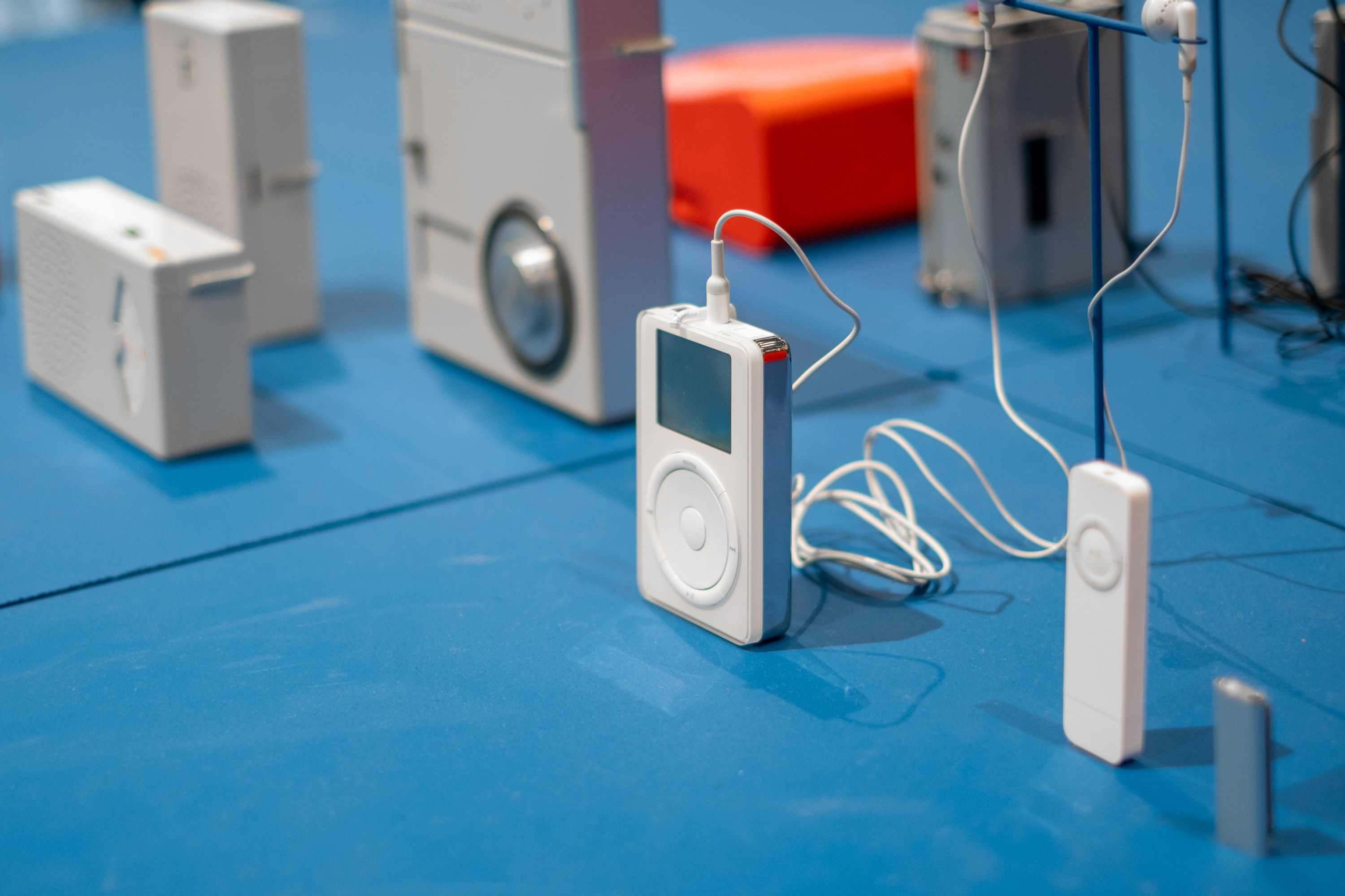
The iPod represents a fundamental shift in music listening habits. At the time one could build mp3 playlists and listen to them on a computer. For on the go enjoyment one could burn CDs and carry around a portable CD player. The iPod (and possibly the Creative Nomad Jukebox with its large harddrive) permanently changed habits for a generation. Note: The fastest way to determine if an iPod is a first or second generation model is to look at the 4 buttons surrounding the scroll wheel. If they are separate it’s a first or second generation. If they are integrated it’s at least a fourth generation. The third generation had four buttons horizontally placed above the wheel which was a mistake in my opinion.
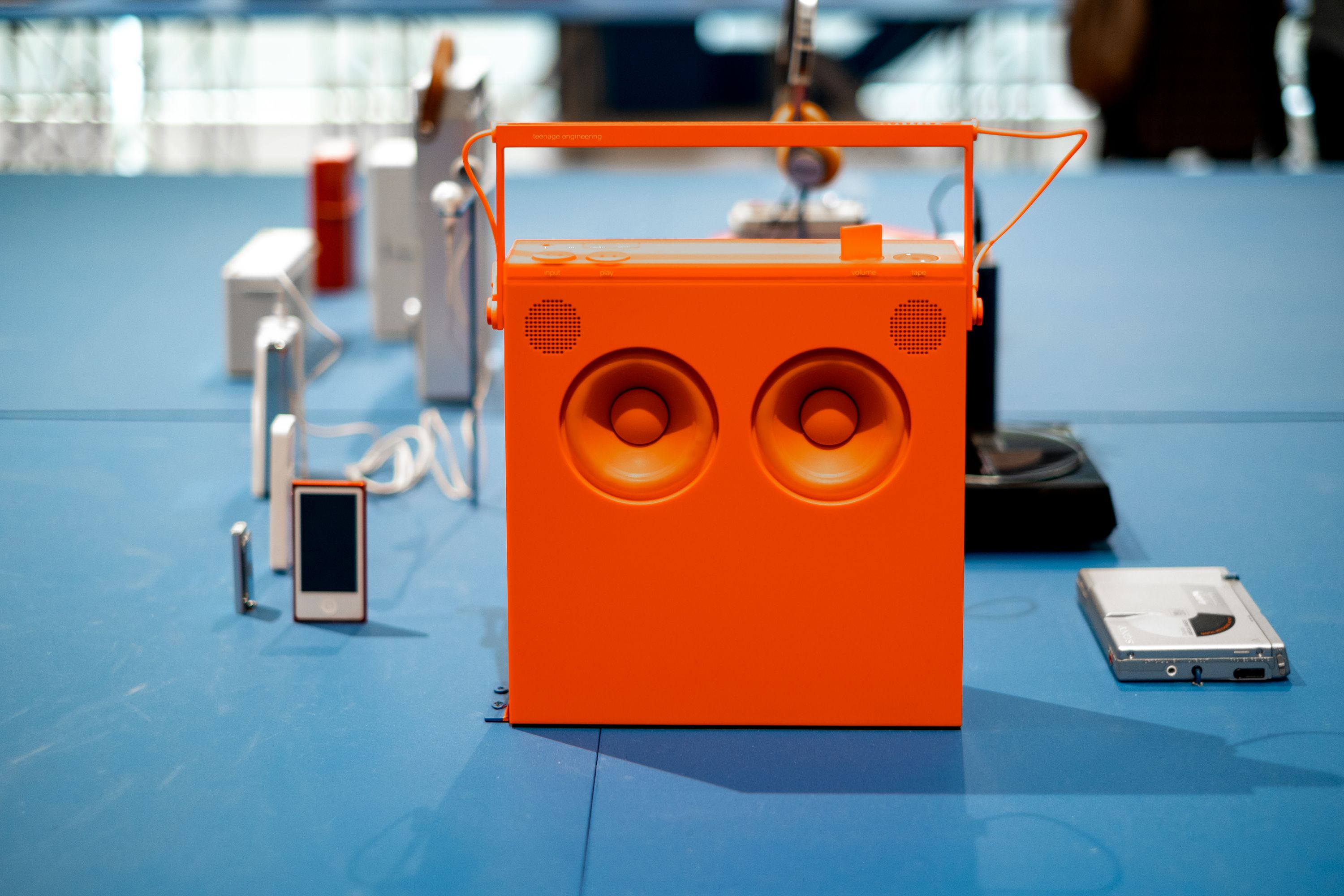
Teenage Engineering, the firm that designed this exhibit, makes highly functional, beautiful products like the OB-4 Bluetooth speaker which is offered in this striking orange. At $549 it’s a tough sell, but I assume I will purchase a white model eventually.

The Harmon Kardon SoundSticks and iSub are the result of a partnership with Apple in 2000. Jony Ive designed the iSub (obviously?) and one is currently in MoMA’s collection in New York City. I definitely need to add these to my collection. After two revisions over the past two decades, the fourth iteration was recently launched. I’m relieved to report that Harmon Kardon maintained the SoundSticks’ beauty and elegance with this new design.

One thing we have lost with Sonos, the Apple TV, and other modern audio/video products is modularity. Stereo companies once strived to design beautiful, dedicated hardware. Each piece had its own purpose, and one could expand a system’s capabilities by adding a new item to the stack. Now this is sadly relegated to ultra high-end systems. The Bang & Olufson Beograd 5500 system is a statement, especially when placed next to its “master control panel.”
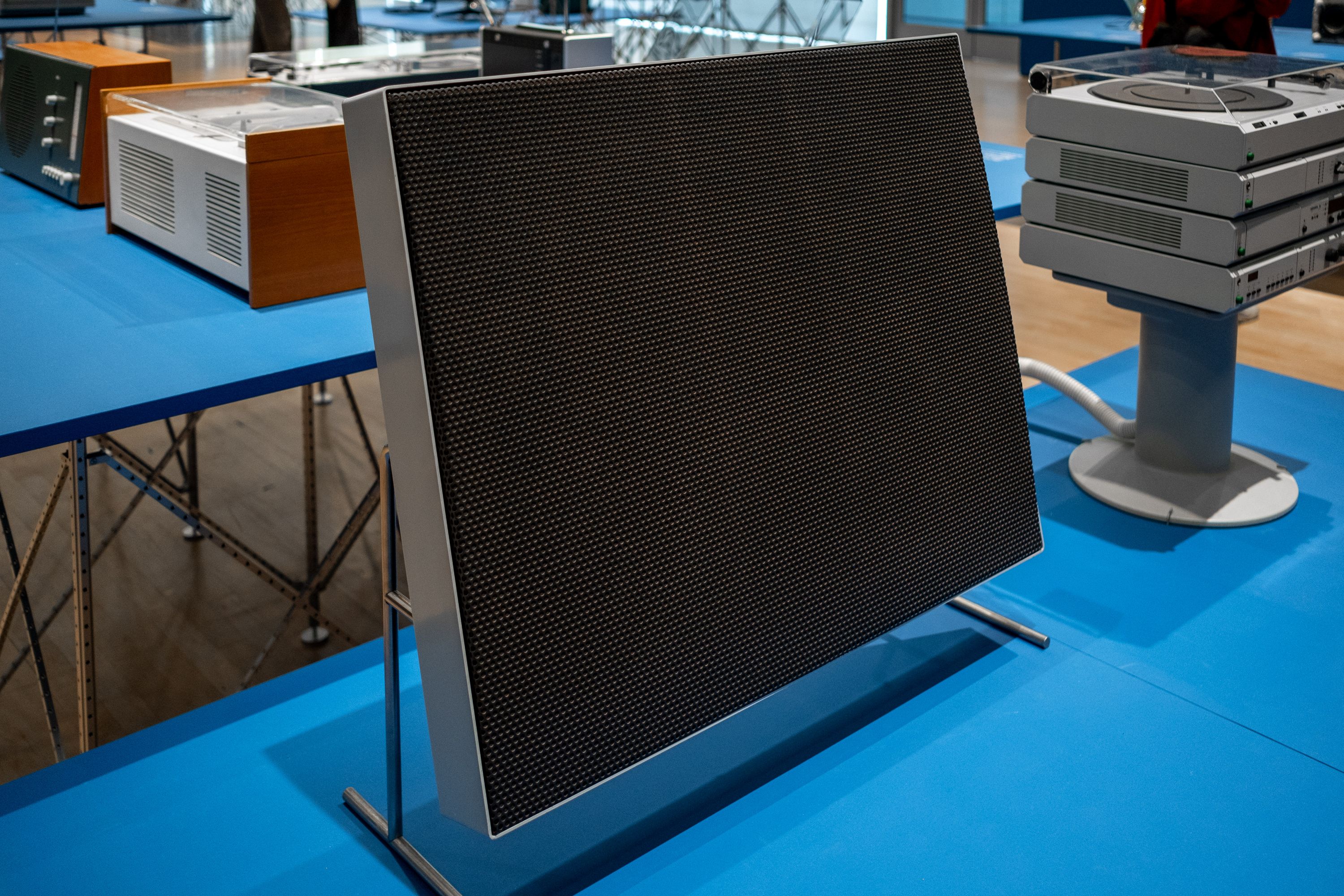
It’s difficult to believe the Braun LE1 was released in 1960. It would feel at home in a living room today. The design of the more recent LE01 is playful and reminiscent of the original model’s design, but certainly lacking in height. Perhaps I will purchase an LE01 the day I open a design studio.
DJ station
I want to be very clear about something: I know nothing about DJs, DJ equipment, or what being a DJ entails. In fact, every time I try to organize music at a party, I am ridiculed for my taste (even during my own birthday dinner). However, if I were to be come a DJ during a midlife crisis, I would definitely want equipment designed by Teenage Engineering.
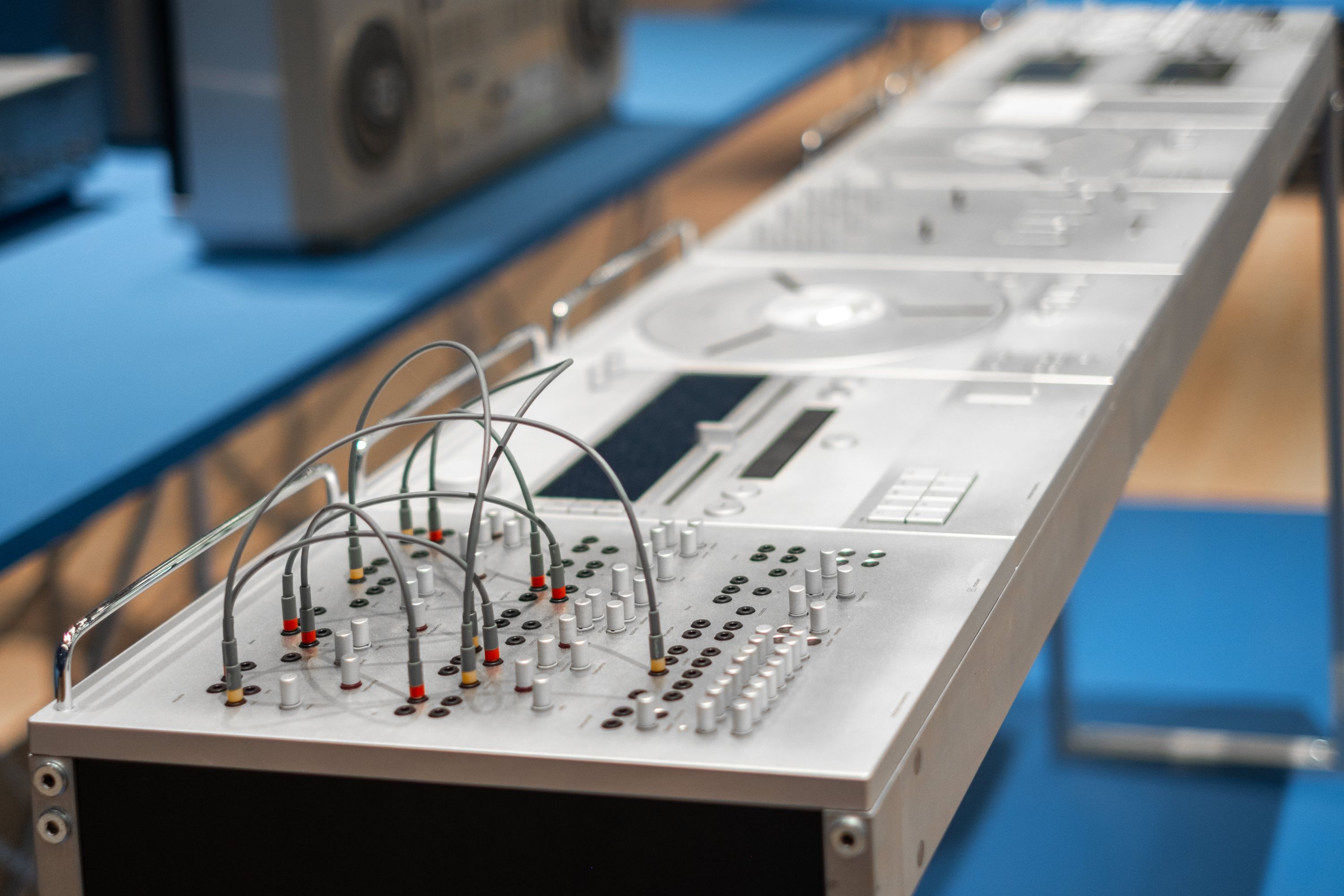
I love Teenage Engineering’s versatility. Their designs range from tiny audio products like the TP-7 field recorder all the way to table-sized products like this setup. Their products also share a design language and color palette of white, black, and grey with orange accents. Even from a distance I can sense how it would feel to press each button.
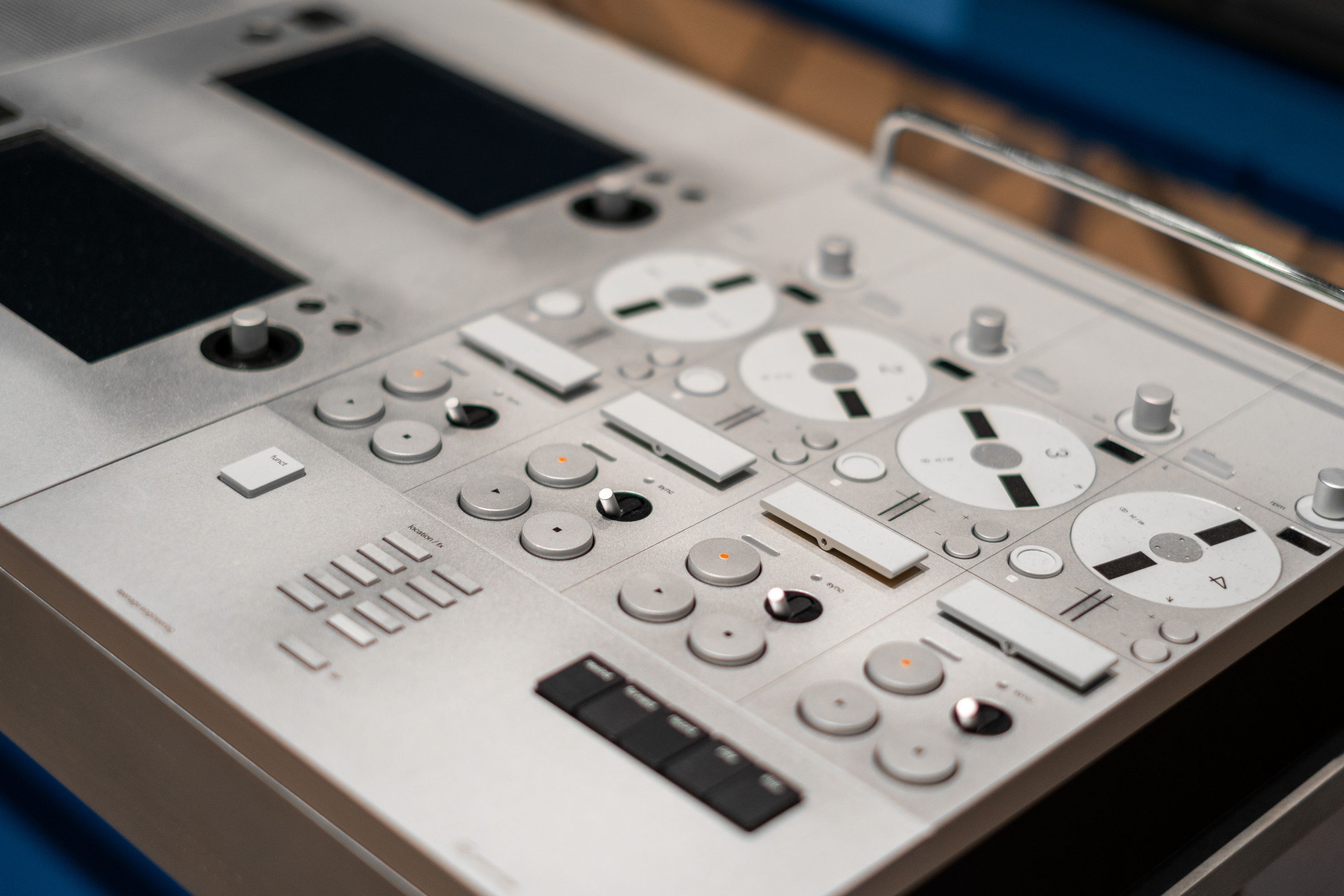
Choir
After viewing all of the products one can venture to the final room which consists of a bench, a table, and Teenage Engineering’s Choir. A series of wooden dolls play choral classics and each has a dedicated light that shines downward when it plays a sound. I appreciate the unique design of each doll and how they are “based on cultures and characters from across the world,” but I left wondering why. Why was Teenage Engineering compelled to build this? I would understand if they were limited to this single exhibit, but the set is available to purchase for approximately $2,000.
Oh. Wait. The Choir can be paired with the OP-1 which can be used to “conduct an orchestra.”
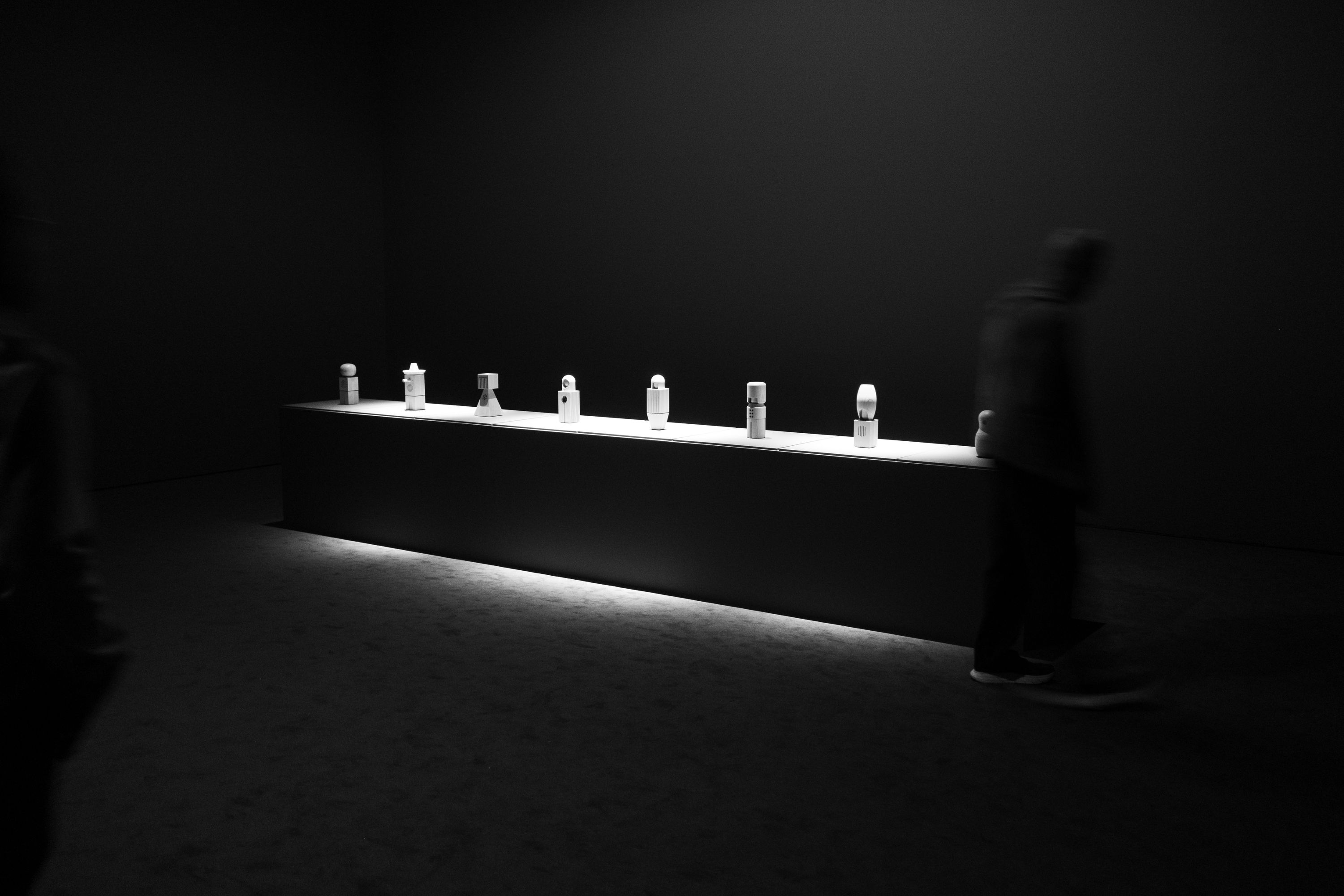
I am particularly proud of this shot with the ghostly appearance of a man floating past the table.
Wrapping up
I usually look suspiciously at people who walk around galleries photographing paintings. Do they actually look at those photos in the future? How can one possibly capture the beauty of a painting with a cell phone (or any camera)? The photos are crooked and poorly lit. Put your phone down and enjoy the pieces!
However, I felt compelled to photograph this exhibit because it was not a typical museum experience. There were colors, sounds, and hardware. Funky, nostalgic, unique hardware. The listening rooms were also worth capturing with perfectly lit speakers, and exhibitors who were endlessly photogenic while enjoying the music.
I highly recommend swinging by MoMA to see this exhibit. You have until August 18! I also hope to see more exhibits that focus on products as art in the future.